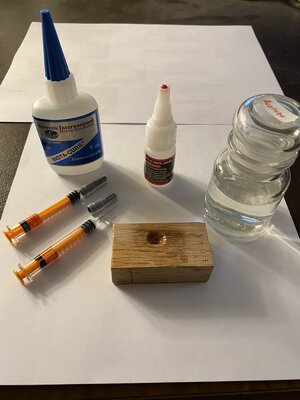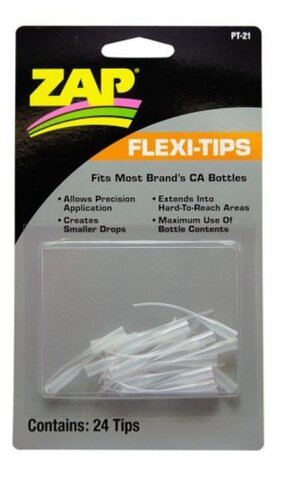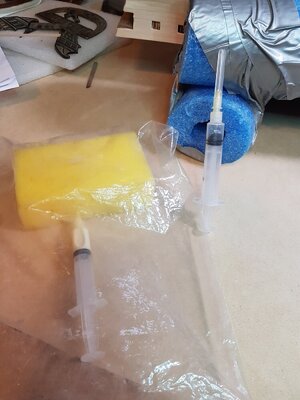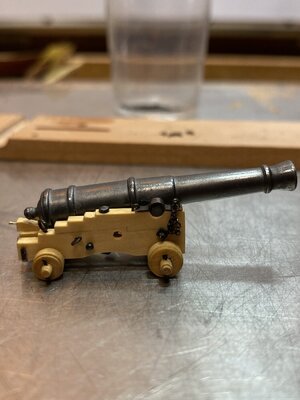- Joined
- Dec 28, 2018
- Messages
- 39
- Points
- 78

Hello everybody,
Well, I see that almost all of you use specific fine tubing... I don't. Let me explain:
We all know how complicated is the use of CA; I also had my share of glued fingers, clogged fine tubing, brilliant glue stains on the model and so on...
Then I found out that the best solvent for CA is not the proposed by manufacturers "debonder" but acetone.
And one day a used hypodermic used syringe fell into my hands. When I saw the extreme thinness of the needle I said to myself "how could I reuse this perfect syringe?"
Here is how I proceed:
I place a small container of acetone close to my gluing position*
I pour 1 or 2 drops of CA in a piece of slightly drilled hard wood (oak or beech) see the attached picture
I clean with a soft cloth the mouth of the glue container and close it
I draw the liquid in the syringe and glue the prepared piece.
Then (if there is still glue in the syringe) I empty it back in the carved wood
And here is the trick: I immediately dip the syringe in the acetone and fill it and then empty it again in the acetone twice or three times.
Ending this process which has to be quick, I leave a little acetone in the syringe and I seal it with its original cap.
If you need extra small quantities of glue, flatten the tip of the needle.
* Remember that acetone is volatile and evaporates, therefore use a container that can be sealed air tight.
Now you will ask me where to find this kind of syringe... Make friends with your pharmacist!!!!

I hope to have been of some help
Well, I see that almost all of you use specific fine tubing... I don't. Let me explain:
We all know how complicated is the use of CA; I also had my share of glued fingers, clogged fine tubing, brilliant glue stains on the model and so on...
Then I found out that the best solvent for CA is not the proposed by manufacturers "debonder" but acetone.
And one day a used hypodermic used syringe fell into my hands. When I saw the extreme thinness of the needle I said to myself "how could I reuse this perfect syringe?"
Here is how I proceed:
I place a small container of acetone close to my gluing position*
I pour 1 or 2 drops of CA in a piece of slightly drilled hard wood (oak or beech) see the attached picture
I clean with a soft cloth the mouth of the glue container and close it
I draw the liquid in the syringe and glue the prepared piece.
Then (if there is still glue in the syringe) I empty it back in the carved wood
And here is the trick: I immediately dip the syringe in the acetone and fill it and then empty it again in the acetone twice or three times.
Ending this process which has to be quick, I leave a little acetone in the syringe and I seal it with its original cap.
If you need extra small quantities of glue, flatten the tip of the needle.
* Remember that acetone is volatile and evaporates, therefore use a container that can be sealed air tight.
Now you will ask me where to find this kind of syringe... Make friends with your pharmacist!!!!

I hope to have been of some help











